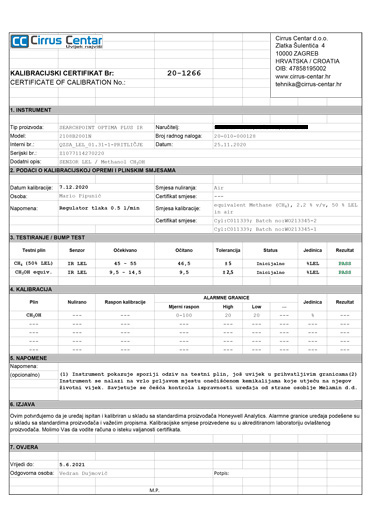Generally about protective devices and their role
Protective devices (portable and fixed gas detectors) are an extremely important segment of protection of operational personnel in endangered areas. Their use is defined by special directives, norms, national and internal company and production standards.
Unfortunately, every now and then we witness situations where avoiding compliance with regulations and procedures related to personal protection often causes adverse events in business. Likewise, a considerable number of companies or responsible persons, due to their concentration on the operational segment of work, consciously or unconsciously neglect the personal protection segment, justifying it by the fact that “there is no real risk” and “it will not happen to me”.
The fact is that, even in the case when the adverse event does not endanger life, the occurrence of the same results in significant costs and penalties, the amount of which far exceeds the multi-year cost of procurement and maintenance of such devices.
The importance of regular maintenance of personal protective equipment
Given that the primary role of gas detectors is to protect personnel in endangered areas, their proper functioning is the basic and only prerequisite that they must meet.
Given that these are very sophisticated and robust devices with special algorithms for constant self-diagnosis and verification, there are not many relevant providers of such solutions on the global market. At all relevant manufacturers, regular maintenance, testing and calibration is stated as a basic prerequisite for the correct and safe operation of the device.
Main advantages of regular maintenance and calibration:
- Independent control of the correctness of the device by the authorized manufacturer
- Significantly extended device and sensor life (TOC – Total Cost of Ownership)
- Calibration or testing of the device for a specific certified gas mixture in order to check the sensor and all key parts of the device
- Long-term security of investments and the entire process of personnel protection
Unfortunately, there are very common examples where users procure personal protective devices and then, for one reason or another, stop taking care of the devices, especially if they are not used. This is a potentially quite dangerous situation because for unmaintained devices, even when they are of a more recent date, there is always a risk of failure just when the reaction is most needed.
It is a potentially very dangerous situation when users, due to general inactivity caused by the absence of business activities in endangered areas, stop using personal protective detectors for a while. Very often, for the sake of general savings, regular maintenance / calibration is abandoned, but in most cases this decision is ultimately the most expensive.
- Uncalibrated sensors significantly shorten the service life (up to 40%), which is usually the most expensive part of the device
- Devices lose traceability and become unreliable for further use
- Users are exposed to additional risk when entering endangered areas
It is a very dangerous situation when, due to urgent engagement, detectors whose service interval has expired or detectors that have not been calibrated or checked for a certified mixture (so-called bump test) are used in endangered areas.
The responsibility for the proper use of the personal protective device is always on the owner or the responsible person of the owner of the device.
Since these are devices that protect human life and health, it is extremely important that they function properly and that they are regularly checked or calibrated.
Adverse situations are certainly rare and it is better to be so, but when they unfortunately occur, they entail a series of consequences that can certainly be prevented by proper treatment of these protective devices during their lifetime.

